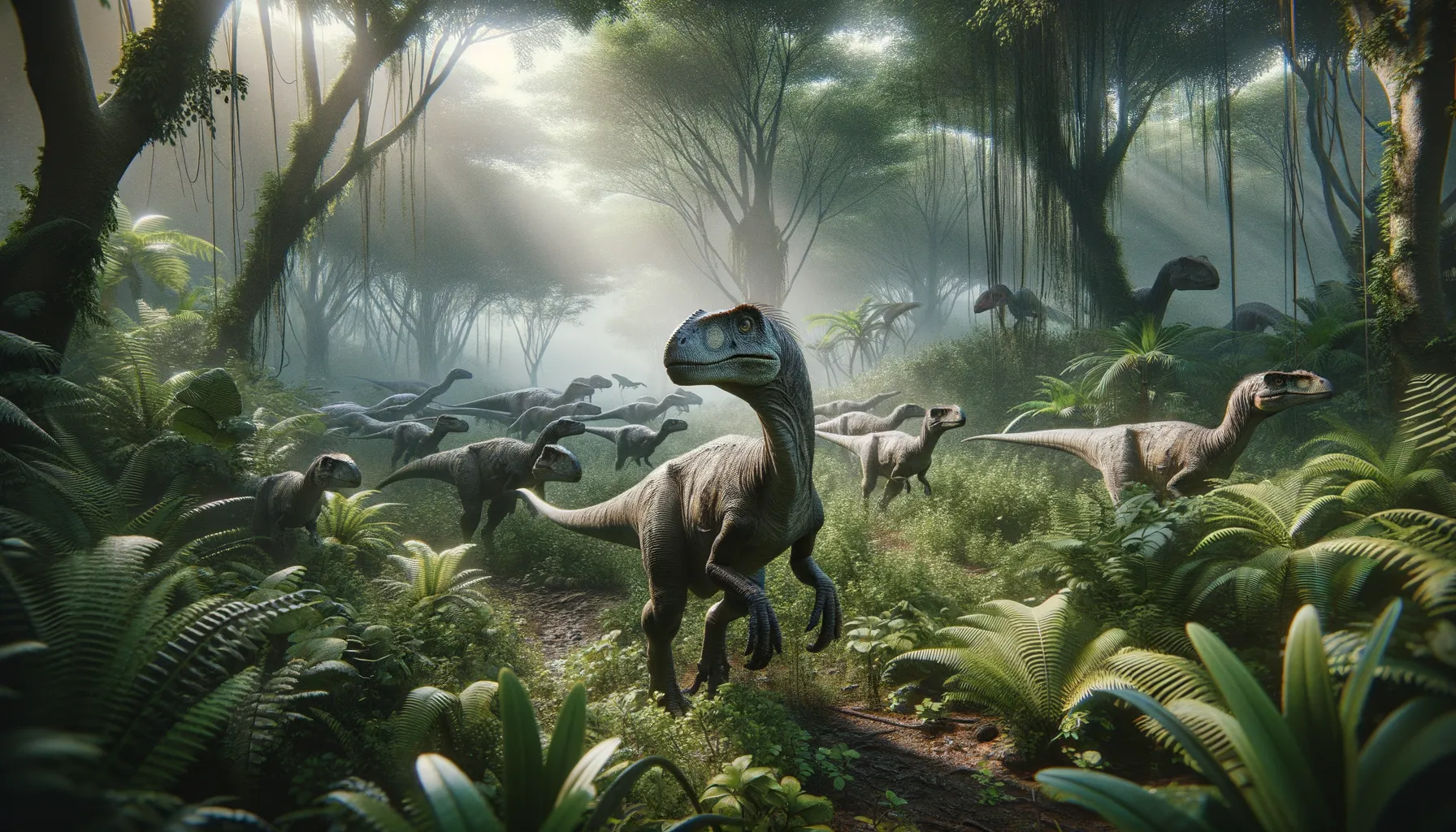
Microdontosaurus
Small stature, big presence in Cretaceous times!
Period
Cretaceous
Length
Roughly 2 meters in length.
Height
About 1 meter tall.
Weight
Approximately 30 kilograms.
Microdontosaurus was a small dinosaur that roamed the earth during the Cretaceous period, known for its diminutive size and distinct dental features. It had a light, agile body which helped it navigate the dense foliage of its habitat. Its diet primarily consisted of vegetation, and it likely lived in herds to protect itself from larger predators. Fossils of this fascinating species offer a glimpse into the diverse dinosaur communities of its time.
Diet
Microdontosaurus was herbivorous, feeding mainly on plants, leaves, and perhaps soft fruits. Its teeth were well-suited for grazing and processing fibrous vegetation, ensuring it could maximize its nutritional intake from the available flora.
Hunting
As a herbivore, Microdontosaurus did not hunt for food. Instead, it likely foraged in groups to find enough plant material to sustain its population. It would have relied on its sense of smell and sight to locate edible plant sources.
Environmental challenges
Microdontosaurus faced challenges such as seasonal changes which could affect plant availability. It had to adapt to predators in its environment, which posed constant threats. Droughts could have been a significant challenge, affecting water and food supplies. Its ability to live in groups might have been a strategy to overcome these environmental pressures.
Speed
Relatively slow-moving due to its small size.
Lifespan
Estimated lifespan is around 10 to 20 years.
First discovery
Discovered in a remote area of Mongolia in 1989.
Fun Facts
- Microdontosaurus, whose name means 'small-toothed lizard,' was known for its tiny yet sharp teeth.
- This dinosaur lived during the Cretaceous period, approximately 100 million years ago.
- Microdontosaurus was a herbivore, feeding primarily on low-lying plants.
- Despite its small teeth, it was able to efficiently munch on tough vegetation.
- It is believed to have had a relatively small stature compared to other dinosaurs of its time.
- Fossils of Microdontosaurus have been found in what is now known as Asia, offering insights into its habitat.
- The discovery of Microdontosaurus fossils has helped scientists better understand the diverse dinosaur ecosystem of the Cretaceous period.
Growth and Development
Young Microdontosaurus would have grown rapidly to increase their chances of survival against predators. Growth involved a steady diet of nutritious plants to support their development. Their small size was advantageous in blending into the vegetation, minimizing predator threats during vulnerable juvenile stages.
Habitat
Microdontosaurus lived in forested areas with lush vegetation which provided cover and food. Its habitat would have included both open plains and densely vegetated areas. Access to water sources was crucial, influencing their choice of dwelling regions.
Interaction with other species
Microdontosaurus likely coexisted with various herbivores and predators. It would have been a prey species for larger carnivorous dinosaurs. Its social structure, possibly herding, helped it navigate these interactions, offering group protection.
Natural lifespan
In a predator-laden ecosystem, its natural lifespan was likely around 15 years in the wild.
Reproduction
Microdontosaurus likely laid eggs, much like modern reptiles and birds. Nesting may have occurred in secluded areas to protect vulnerable eggs from predators. The young would have been relatively independent shortly after hatching, joining herds quickly for safety.
Social behaviour
They lived in social groups, forming herds for protection against predators. This social structure allowed them to forage more effectively and offer warnings of approaching threats. Communication within the group might have included vocal sounds or physical signals.
Fossil locations
Fossilized remains of Microdontosaurus have been predominantly found in the Mongolian region. These discoveries provide important insights into the Cretaceous ecosystems of Asia and the diversity of dinosaur species that existed there. Continued fossil digs in these areas could uncover more about their lifestyle and behavior.
